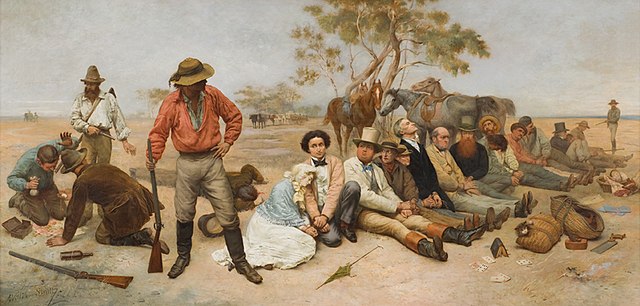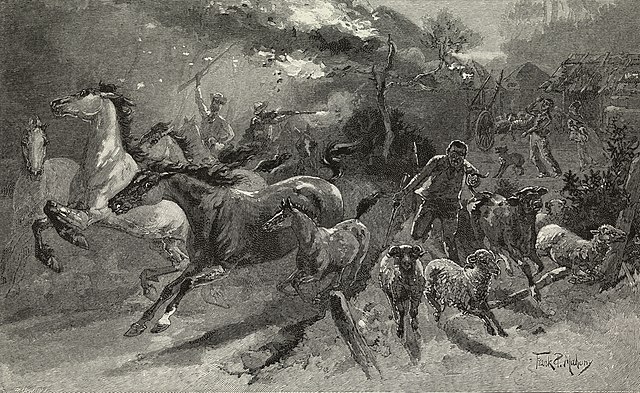Thomas Frederick Lowry, better known as Fred Lowry, was an Australian bushranger whose crimes included horse theft, mail-coach robbery, prison escape, and assault with a deadly weapon. Lowry briefly rode with the Gardiner–Hall gang, but soon afterwards formed his own gang with John Foley.
Illustration of Fred Lowry by Samuel Calvert (Illustrated Melbourne Post, October 1863)
The Cockatoo Island prison, Sydney Harbour, where Fred Lowry was sentenced to five years' hard labour for horse-stealing in 1858
The courthouse and goal at Bathurst (photographed in the early 1870s)
'The Mudgee mail arrives at its destination (!)', a satirical response to the lucrative mail-coach robbery by Lowry and Foley (Melbourne Punch, November 1863)
Bushrangers were originally escaped convicts in the early years of the British settlement of Australia who used the bush as a refuge to hide from the authorities. By the 1820s, the term had evolved to refer to those who took up "robbery under arms" as a way of life, using the bush as their base.
William Strutt's Bushrangers on the St Kilda Road, painted in 1887, depicts what Strutt described as "one of the most daring robberies attempted in Victoria" in 1852. The road was the scene of frequent hold-ups during the Victorian gold rush by bushrangers, mostly former convicts from Van Diemen's Land (present-day Tasmania), which collectively became known as the St Kilda Road robberies.
Convict artist Joseph Lycett's 1825 painting of the Nepean River shows a gang of bushrangers with guns.
Vandemonian bushrangers plundering and burning a homestead
Bushrangers attack mounted policemen guarding a gold escort








